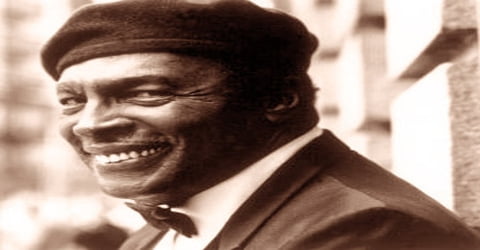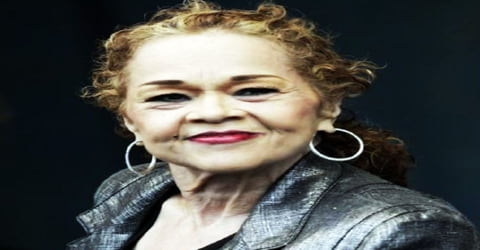Biography of Betty Friedan
Betty Friedan – American feminist writer and activist.
Name: Bettye Naomi Goldstein
Date of Birth: February 4, 1921
Place of Birth: Peoria, Illinois, U.S.
Date of Death: February 4, 2006 (aged 85)
Place of Death: Washington, D.C., U.S.
Occupation: Writer, activist
Spouse/Ex: Carl Freidan (1947-1969)
Children: Daniel Friedan, Emily Friedan, Jonathan Friedan
Early Life

Writer, feminist and women’s rights activist Betty Friedan was born on February 4, 1921, in Peoria, Illinois, to Harry and Miriam (Horwitz) Goldstein, whose Jewish families were from Russia and Hungary. She was an American feminist best known for her book The Feminine Mystique (1963), which explored the causes of the frustrations of modern women in traditional roles.
A leading figure in the women’s movement in the United States, her 1963 book The Feminine Mystique is often credited with sparking the second wave of American feminism in the 20th century. In 1966, Friedan co-founded and was elected the first president of the National Organization for Women (NOW), which aimed to bring women “into the mainstream of American society now in fully equal partnership with men.”
She had founded many organizations to raise awareness for bridging the gap between men and women in society. Having been a bright student throughout school, she graduated summa cum laude from college, majoring in Psychology. An ardent worker for newspapers, she wrote articles for columns since her school days, a passion that continued into college, and after. Later, she worked as a journalist for leftist publications and assignments. The jewels in the crown to her writing career were the six books published by her, including her autobiography ‘Life So Far’. In all her books, she has tried to analyze the woman’s role in society and put forth ideas for her liberation from being the subdued one. She also worked as a visiting professor in various colleges.
In 1970, after stepping down as NOW’s first president, Friedan organized the nationwide Women’s Strike for Equality on August 26, the 50th anniversary of the Nineteenth Amendment to the United States Constitution granting women the right to vote. The national strike was successful beyond expectations in broadening the feminist movement; the march led by Friedan in New York City alone attracted over 50,000 people. In 1971, Friedan joined other leading feminists to establish the National Women’s Political Caucus. Friedan was also a strong supporter of the proposed Equal Rights Amendment to the United States Constitution that passed the United States House of Representatives (by a vote of 354–24) and Senate (84–8) following intense pressure by women’s groups led by NOW in the early 1970s. Following Congressional passage of the amendment, Friedan advocated for ratification of the amendment in the states and supported other women’s rights reforms: she founded the National Association for the Repeal of Abortion Laws but was later critical of the abortion-centered positions of many liberal feminists.
Though her struggle was for women’s equality, she was not in favor of feminism against men or the family. She sought for an agenda where the working woman was supported by child care, health care, housing, and other facilities. She aimed for a political movement of women and men working towards a new society.
Regarded as an influential author and intellectual in the United States, Friedan remained active in politics and advocacy until the late 1990s, authoring six books. As early as the 1960s Friedan was critical of polarized and extreme factions of feminism that attacked groups such as men and homemakers. One of her later books, The Second Stage (1981), critiqued what Friedan saw as the extremist excesses of some feminists.
Childhood, Family and Educational Life
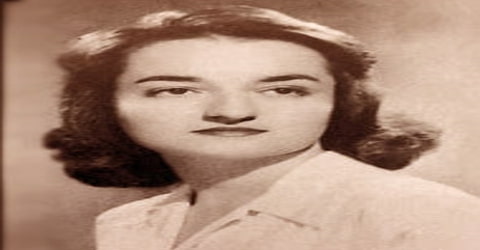
Betty Friedan, née Bettye Naomi Goldstein, was born on February 4, 1921, in Peoria, Illinois, to Miriam and Harry Goldstein, who were Jews hailing from Russia and Hungary. Her father owned a jewelry store while her mother was a housewife who started to work after Harry fell ill.
As a young girl, Friedan was active in both Marxist and Jewish circles; she later wrote how she felt isolated from the latter community at times and felt her “passion against injustice…originated from my feelings of the injustice of anti-Semitism”. She attended Peoria High School and became involved in the school newspaper. When her application to write a column was turned down, she and six other friends launched a literary magazine called Tide, which discussed home life rather than school life.
Friedan was very active, decisive, and rebellious right from her younger days. In school, when her request to start her own column was turned down, she retaliated by starting a magazine of her own called ‘Tide’ with six other friends. She attended the prestigious ‘Smith College’ for girls, in 1938 and bagged a scholarship in the first year for outstanding academic performance. In the second year, she wrote poetry which got published in the college magazines. In 1941, she became editor-in-chief of the college newspaper. The editorials became more political under her leadership, taking a strong antiwar stance and occasionally causing controversy.
Betty Friedan went on to graduate from Smith College in 1942. She then studied psychology as a graduate student at the University of California at Berkeley. In her memoirs, she claimed that her boyfriend at the time had pressured her into turning down a Ph.D. fellowship for further study and abandoning her academic career. Like her mother, she did some work as a journalist, but unlike her mother, she did not end her career to build a family.
Personal Life
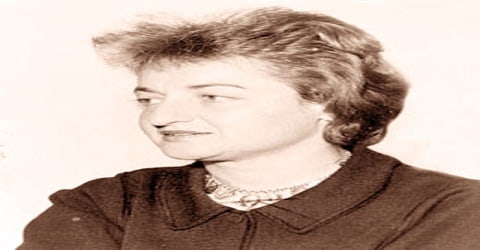
Betty Friedan married Carl Friedan (né Friedman), a theater producer, in 1947 while working at UE News. She continued to work after marriage, first as a paid employee and, after 1952, as a freelance journalist. The couple divorced in May 1969, and Carl died in December 2005.
Carl and Betty Friedan had three children, Daniel, Emily, and Jonathan. She was raised in a Jewish family but was an agnostic. In 1973, Friedan was one of the signers of the Humanist Manifesto II.
Career and Works

Bettye Goldstein graduated in 1942 from Smith College with a degree in psychology and, after a year of graduate work at the University of California, Berkeley, settled in New York City. She worked at various jobs until 1947, when she married Carl Friedan (divorced 1969). For 10 years thereafter she lived as a housewife and mother in the suburbs of New York while doing freelance work for a number of magazines.
Between 1943 and 1946 Friedan wrote for The Federated Press and between 1946 and 1952 she worked for the United Electrical Workers’ UE News. One of her assignments was to report on the House Un-American Activities Committee. She was dismissed from the union newspaper UE News in 1952 because she was pregnant with her second child. After leaving UE News she became a freelance writer for various magazines, including Cosmopolitan.
According to Friedan biographer Daniel Horowitz, Friedan started as a labor journalist when she first became aware of women’s oppression and exclusion, although Friedan herself disputed this interpretation of her work.
In 1957 a questionnaire that she circulated among her Smith classmates suggested to her that a great many of them were, like her, deeply dissatisfied with their lives. She planned and undertook an extensive series of studies on the topic formulating more detailed questionnaires, conducting interviews, discussing her results with psychologists and other students of behavior and finally organized her findings, illuminated by her personal experiences, in her 1963 landmark book, The Feminine Mystique.
The result of her effort was The Feminine Mystique, which became an instant success, selling over three million copies. Friedan began her book by describing what she called “the problem that has no name.” In words that touched a nerve in thousands of middle-class American women, she wrote, “the problem lay buried, unspoken, for many years in the minds of American women. It was a strange stirring, a sense of dissatisfaction, a yearning that is, a longing that women suffered in the middle of the 20th century in the United States. Each suburban wife struggled with it alone. As she made the beds, shopped for groceries … she was afraid to ask even of herself the silent question ‘Is this all?'” Attacking the notion that “biology is destiny,” under which women were expected to devote their lives to being wives and mothers and give up all other pursuits, Friedan called upon women to do whatever it took to discover other meaningful activities.
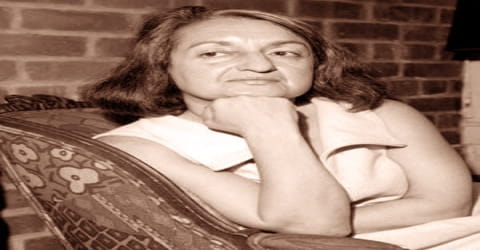
Friedan originally intended to write a sequel to The Feminine Mystique, which was to be called “Woman: The Fourth Dimension,” but instead only wrote an article by that title, which appeared in the Ladies’ Home Journal in June 1964.
In 1966, she founded the ‘National Organization for Women’ (NOW) and became its first President. Through this organization, she campaigned fiercely for the equality of women and lobbied for legal rights.
As president of NOW, Friedan directed campaigns to end sex-classified employment notices, for greater representation of women in government, for child-care centers for working mothers, and for legalized abortion and other reforms. Although it was later occasionally eclipsed by younger and more-radical groups, NOW remained the largest and probably the most effective organization in the women’s movement. Friedan stepped down from the presidency in March 1970 but continued to be active in the work that had sprung largely from her pioneering efforts, helping to organize the Women’s Strike for Equality held on August 26, 1970, the 50th anniversary of woman suffrage and leading in the campaign for ratification of the proposed Equal Rights Amendment to the U.S. Constitution. A founding member of the National Women’s Political Caucus (1971), she said it was organized “to make policy, not coffee.” In 1973 she became director of the First Women’s Bank and Trust Company.
Freidan helped set up ‘National Women’s Political Caucus’ in 1971 and ran as a delegate to the Democratic National Convention. She stood in support of Congress-woman Shirley Chisholm but was unsuccessful.
NOW also lobbied for passage of the Equal Rights Amendment (ERA), which had been introduced in Congress by Alice Paul (1885–1977) in 1923 but had never passed. In addition, the organization called for government-funded day-care centers to be established “on the same basis as parks, libraries, and public schools.” NOW also worked to make abortion (a woman’s right to end a pregnancy) legal and to preserve abortion rights. Friedan was among the founders of the National Abortion Rights Action League in 1969. Finally, in 1973, the Supreme Court legalized abortion.
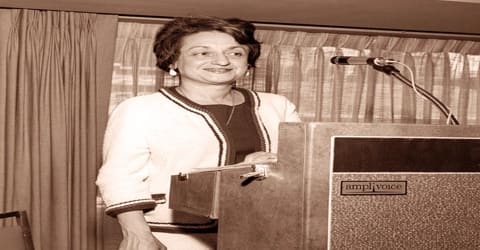
Friedan spoke about the Strike for Equality:
All kinds of women’s groups all over the country will be using this week on August 26 particularly, to point out those areas in women’s life which are still not addressed. For example, a question of equality before the law; we are interested in the equal rights amendment. The question of child care centers which are totally inadequate in society, and which women require if they are going to assume their rightful position in terms of helping in the decisions of society. The question of a women’s right to control her own reproductive processes, that is, laws prohibiting abortion in the state or putting them into criminal statutes; I think that would be a statute that we would be addressing ourselves to.
So I think individual women will react differently; some will not cook that day, some will engage in dialog with their husbands, some will be out at the rallies and demonstrations that will be taking place all over the country. Others will be writing things that will help them to define where they want to go. Some will be pressuring their Senators and their Congressmen to pass legislations that affect women. I don’t think you can come up with anyone point, women will be doing their own thing in their own way.
As the women’s movement grew and new leaders emerged with different concerns, Friedan’s popularity decreased. Still, she remained an outspoken leader for many years. In 1974 she had an audience with Pope Paul VI in which she urged the Catholic Church to “come to terms with the full personhood of women.” In 1977 she participated in the National Conference of Women in Houston, Texas, calling for an end to divisions in the movement and the creation of a new coalition (alliance) of women. Friedan continued writing, teaching, and speaking throughout these years.
In 1976 Friedan published It Changed My Life: Writings on the Women’s Movement and in 1981 The Second Stage, an assessment of the status of the women’s movement. The Fountain of Age (1993) addressed the psychology of old age and urged a revision of society’s view that aging means loss and depletion. Friedan’s other books include the memoir Life So Far (2000). See also feminism; Sidebar: Betty Friedan: The Quality of Life.
From her observations of her mother, her own self and other women, she sought to help women struggling with career and home through her next major book, ‘The Second Stage’ in 1982. By this time, she had begun to present a more moderate view on feminism, as compared to her earlier stance.
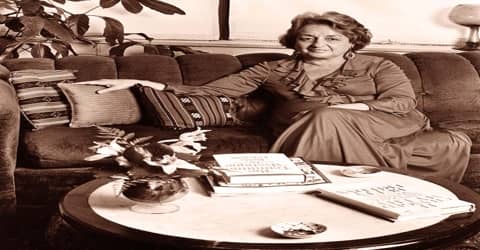
When Friedan grew up in Peoria, Illinois, she knew only one gay man. She said, “the whole idea of homosexuality made me profoundly uneasy”. She later acknowledged that she had been very square, and was uncomfortable about homosexuality. “The women’s movement was not about sex, but about equal opportunity in jobs and all the rest of it. Yes, I suppose you have to say that freedom of sexual choice is part of that, but it shouldn’t be the main issue….” She ignored lesbians in the National Organization for Women (NOW) initially and objected to what she saw as their demands for equal time. “‘Homosexuality…is not, in my opinion, what the women’s movement is all about.'” While opposing all repression, she wrote, she refused to wear a purple armband as an act of political solidarity, considering it not part of the mainstream issues of abortion and child care. But in 1977, at the National Women’s Conference, she seconded a lesbian rights resolution “which everyone thought I would oppose” in order to “preempt any debate” and move on to other issues she believed were more important and less divisive in the effort to add the Equal Rights Amendment (ERA) to the U.S. Constitution. She accepted lesbian sexuality, albeit not its politicization.
Friedan remains an important voice in women’s struggle for equality. Also, in 1993, she wrote The Fountain of Age, turning her attention to the rights of the elderly and aging. In the New York Times she said, “Once you break through the mystique air of mystery of age and that view of the aged as objects of care and as problems for society, you can look at the reality of the new years of human life open to us.” Betty Friedan’s genuine interest in helping others improve and enjoy their lives is as strong today as it was when she first began writing.
In 1995, at the United Nations Fourth World Conference on Women in Beijing, China, Friedan found advice given by Chinese authorities to taxi drivers that naked lesbians would be “cavorting” in their cars so that the drivers should hang sheets outside their cab windows, and that lesbians would have AIDS and so drivers should carry disinfectants, to be “ridiculous”, “incredibly stupid” and “insulting”. In 1997, she wrote that “children…will ideally come from mother and father.” She wrote in 2000, “I’m more relaxed about the whole issue now”.
Seeking to help women wrestle with the demands of work both inside and outside of the home, Friedan published The Second Stage (1982), in which she presents a more moderate feminist position from her earlier work. Friedan later explored the later stages of a woman’s life in The Fountain of Age, which was published in 1993, when she was in her 70s.
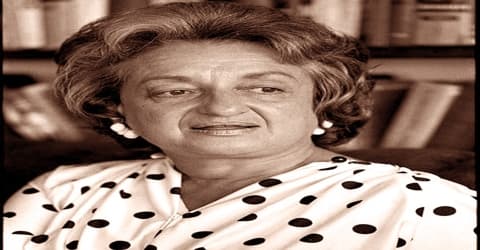
She supported the concept that abortion is a woman’s choice, that it shouldn’t be a crime or exclusively a doctor’s choice or anyone else involved, and helped form NARAL (now NARAL Pro-Choice America) at a time when Planned Parenthood wasn’t yet supportive. In 1980, she believed abortion should be in the context of “‘the choice to have children'”, a formulation supported by the Roman Catholic priest organizing Catholic participation in the White House Conference on Families for that year, though perhaps not by the bishops above him.
Friedan joined nearly 200 others in Feminists for Free Expression in opposing the Pornography Victims’ Compensation Act. “‘To suppress free speech in the name of protecting women is dangerous and wrong,’ says Friedan. ‘Even some blue-jean ads are insulting and denigrating. I’m not adverse to a boycott, but I don’t think they should be suppressed.'”
Though Friedan was in support of legalizing abortion, she was opposed to it as being the focus of feminism. In 2000, she opined that organizations such as ‘NOW’ should not concentrate too much on abortion and must, instead, be a fight for the woman’s freedom to choose childbirth.
Awards and Honor
Freidan received the ‘Humanist of the Year Award’, in 1975 from the American Humanist Association, an educational organization that rewards people for their aspiration for the greater good of humanity. A leading figure in the woman’s movement in the United States, the award was given to Betty Friedan in recognition of her dedicated work on liberating women from the shackles of the home and family.
Friedan received the ‘Mort Weisinger Award’ from the American Society of Journals and Authors in 1979. The society was established to help writers, journalists, authors and freelance writers in their efforts, and to reward those who made exceptional contributions in the field of writing.
Death and Legacy
Betty Friedan died of heart failure on February 4, 2006, at home, in Washington, D.C. She was given a fitting tribute at her funeral not only by her family members but also by mourners from all over the world. She is credited for starting the contemporary feminist movement and writing a book that is one of the cornerstones of American feminism. Her activist work and her book The Feminine Mystique have been a critical influence to authors, educators, writers, anthropologists, journalists, activists, organizations, unions, and everyday women taking part in the feminist movement. Allan Wolf, in The Mystique of Betty Friedan, writes: “She helped to change not only the thinking but the lives of many American women, but recent books throw into question the intellectual and personal sources of her work.” Although there have been some debates on Friedan’s work in The Feminine Mystique since its publication, there is no doubt that her work for equality for women was sincere and committed.
Betty Friedan’s most popular book has been ‘The Feminine Mystique’, written in 1963, which revolved around women and the ‘problem that had no name’, which most women at that age were going through. In the book, she explores the lives of housewives who were largely unhappy in spite of leading comfortable lives and showed interest in the education and careers of their own. Her next book ‘The Second Stage’, published in 1981, dealt with the stage after feminism had been accepted as a change in the society, and had to be taken to the next level. The demand for feminism done with, she wanted the focus of feminism to shift to effective juggling of career and home, equal distribution of responsibilities and economic freedom.
‘Life So Far – A Memoir’ is her autobiography which was published in 2000. In the book, she wrote about how her life took its course and prompted her to adopt the path of feminism and fight for women’s liberty.
Today, Friedan is remembered as one of the leading voices of the women’s rights movement of the 20th century. Furthermore, the work that she started is still being carried by the three organizations she helped to establish.
Friedan (among others) was featured in the 2013 documentary Makers: Women Who Make America, about the women’s movement. In 2014, a biography of Friedan was added to the American National Biography Online (ANB).
Information Source:

